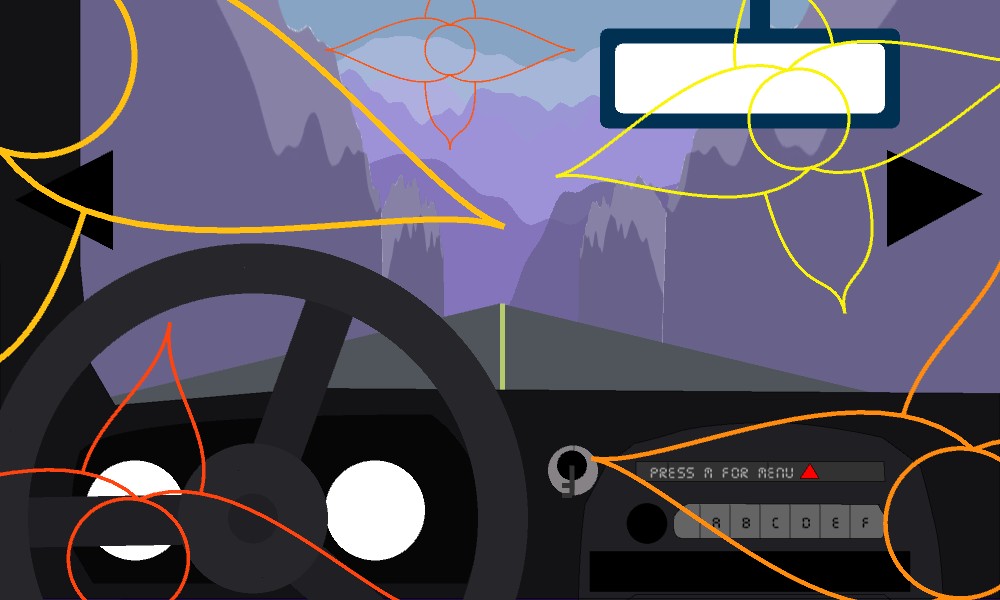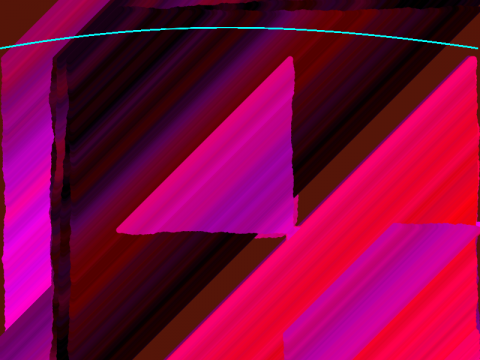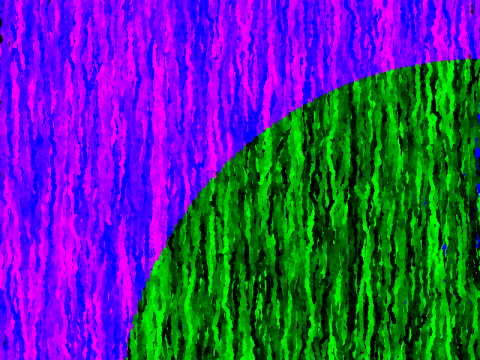
For my conference project, I wanted to explore the feeling of being in a car during a long road trip. This concept may seem simple enough, yet through the creation of this project I discovered how complex the idea became.
First, I started by drawing the frame of the car: knowing that the frame would sort of fade into the conscious background (that is, the body of the car wouldn’t be the central focus, so it should function as a logical starting point- it lets the player know they’re in a car, once, and stops being super relevant afterward). Then, I worked on smaller, interactive pieces within the car to make it feel more alive. The wheel moves, which in turn led to the creation of the road. The key can be placed into the slot, which calls the update() function, giving the car the bumping movement. The player can change perspectives between three different viewpoints, as I wanted them to feel constrained to the car but not constrained to one view. The windows also move.
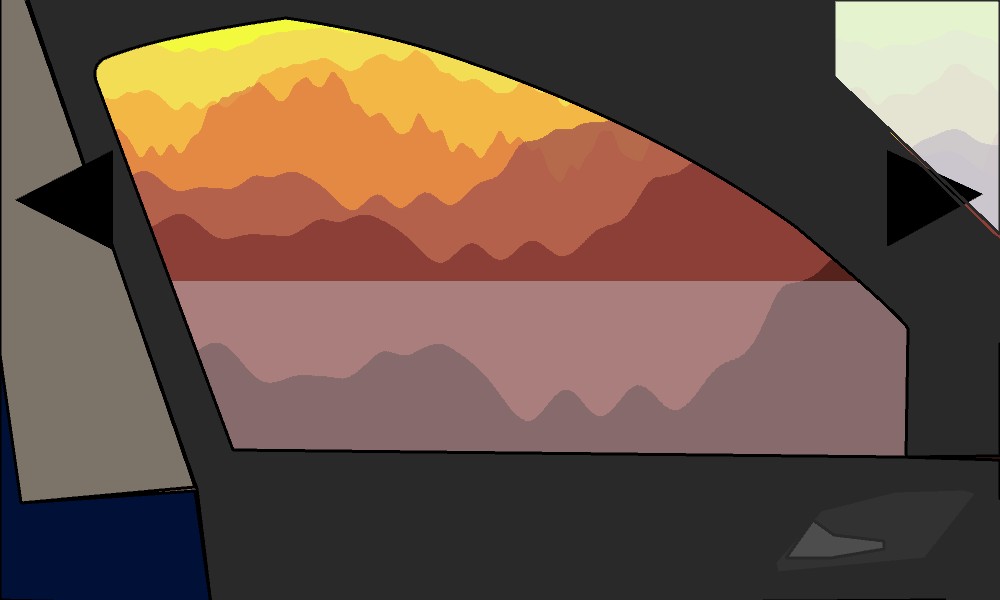
After I constructed the car in its entirety, I worked on the radio. This radio would be one of two main focus points on the car. When on a road trip, music is important to the journey, so I wanted to include tracks that not only exemplified the feeling of being in a car but also lent themselves to the feeling of isolation. I wanted the player to spend time doing two things: watching the scenery and listening to music.
So, once I finished the radio, I moved to the scenery. Originally, the arrows on the side of the screen changed the perspective: after a conference with Angela, she suggested that the arrows change the scenery instead. So, I decided to have four different “scenes” that changed with the arrows instead. This suggestion really helped my piece. The arrows exist outside the bounds of reality, so they should affect something outside the realm of the car. The landscapes are different noise functions stacked on top of each other. Initially, I had them load in each time the arrow was clicked, but this proved to be too tedious for processing, so I opted for images instead. Using the skills I learned from our side scroller class, I created the illusion of movement out both sides of the windows. This process took a bit of research to create: I knew intuitively how perspective worked in a car but had difficulty executing it. This led me down the rabbit hole of “calming nature drive” YouTube video, where I realized what my greatest and most difficult challenge would be: the motion on the sides of the road.
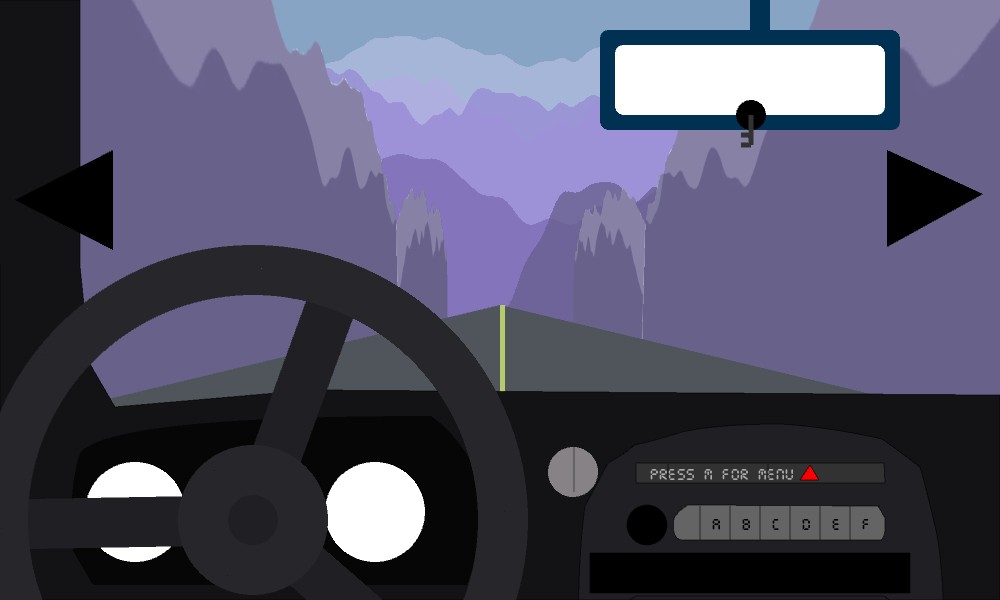
Initially, there wasn’t going to be any motion there: I was going to have the grey road and mountains do the work. However, I wasn’t satisfied with that, so to add to the sort of realism of the movement, I created a new noise image- this time, with just two functions- and cropped out their backgrounds. This helped give the sense of being within a valley of sorts. Then, the movement itself. I decided to work in the 3D mode of Processing to achieve this. Each mountain is on its own matrix, transformed along the X, Y, and Z-axis, and scaled to give the illusion that the mountains grow as they come closer. To make the road seem to travel on forever, I had the mountains reposition themselves every time they passed by the edge of the screen. This process took perhaps the most amount of time, right next to the endings.
As I finished this part of the project, and implemented all the different elements into one document, I began to work on the endings. I knew that the project would have multiple branching endings, and after implementing the unique scenes, I knew the endings would depend on how much time the player spent looking at one scene. Then, after some time passed, the end scene would play:
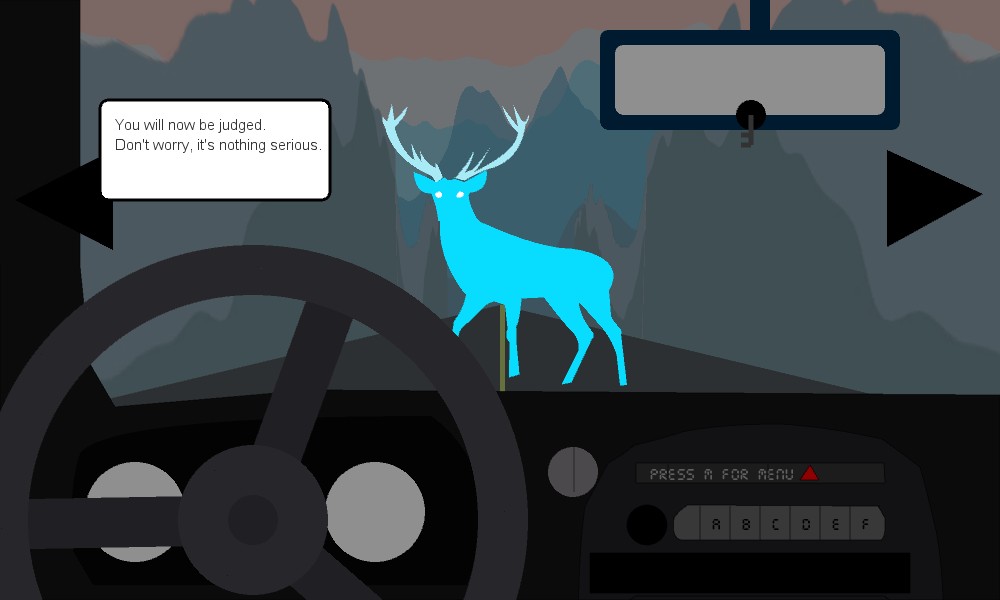
A deer, mysterious and blue, would interrupt the player. The entire scene would bleed into black, and the deer would speak to the player: to pass judgement. I wanted there to be this unsettling feeling to this part, but not unsettling in a horror sense: when travelling alone in an unfamiliar, erie place like the mountains, there are two feelings a person may experience: they might be in touch with their surroundings, and absorb the ethereal climate of it all, and they may experience dread, not knowing what lurks behind every turn. These experiences and emotions really work well together, so I wanted to exemplify that in the deer. He is a bright shade of blue, has no pupils, and speaks out loud. After effectively scaring the player, I wanted them to know that this isolated feeling isn’t something they feel by themselves. As a reward for being vulnerable with the deer “choosing yes when asked if they like a color,” they receive a special ending, dialogue, and song. It is the payoff, the destination, in a way.
The entirety of this project was created by me, alone, in my childhood room. I am in a position that many have found themselves in over quarantine: alone. The very definition of “quarantine” is to spend time isolated from the public. I think my project subconsciously displayed my desire to be somewhere else, for just a while. I haven’t been on an extended car ride in nine months. So when the deer talks about wanting to help the player, giving them a gift, and saying that they can visit “any time,” I tried to echo what I would want to hear from a game about isolation, and what I’m feeling currently. I don’t know if this piece is meant to resonate with anyone, or be relatable in any way, but I hope the player would foster some sort of connection to the game through the setting and music.
